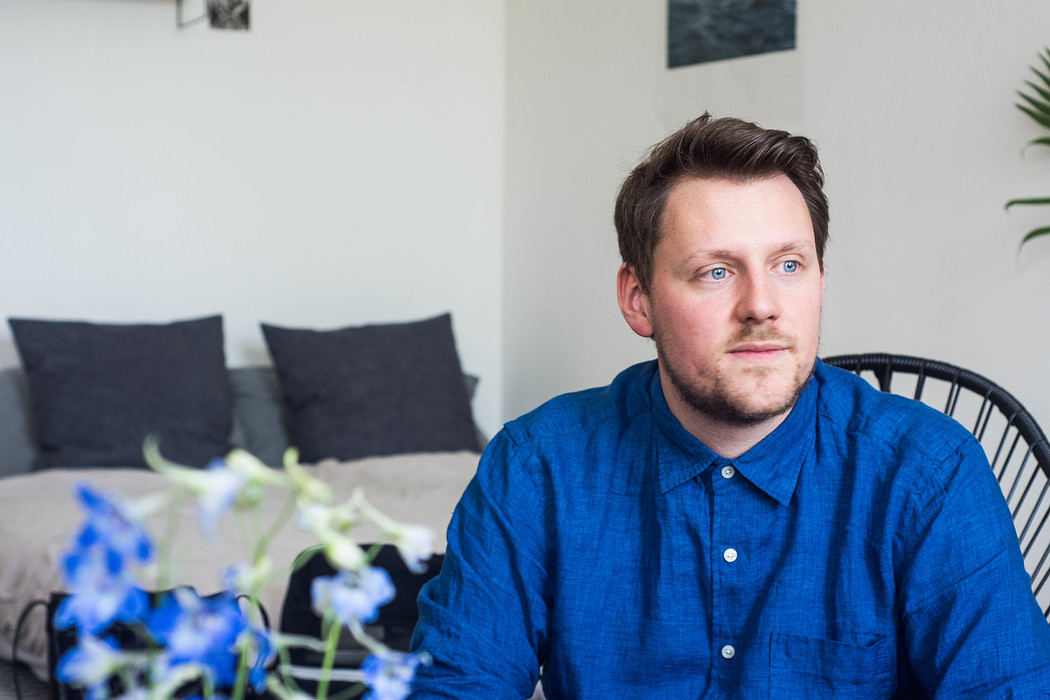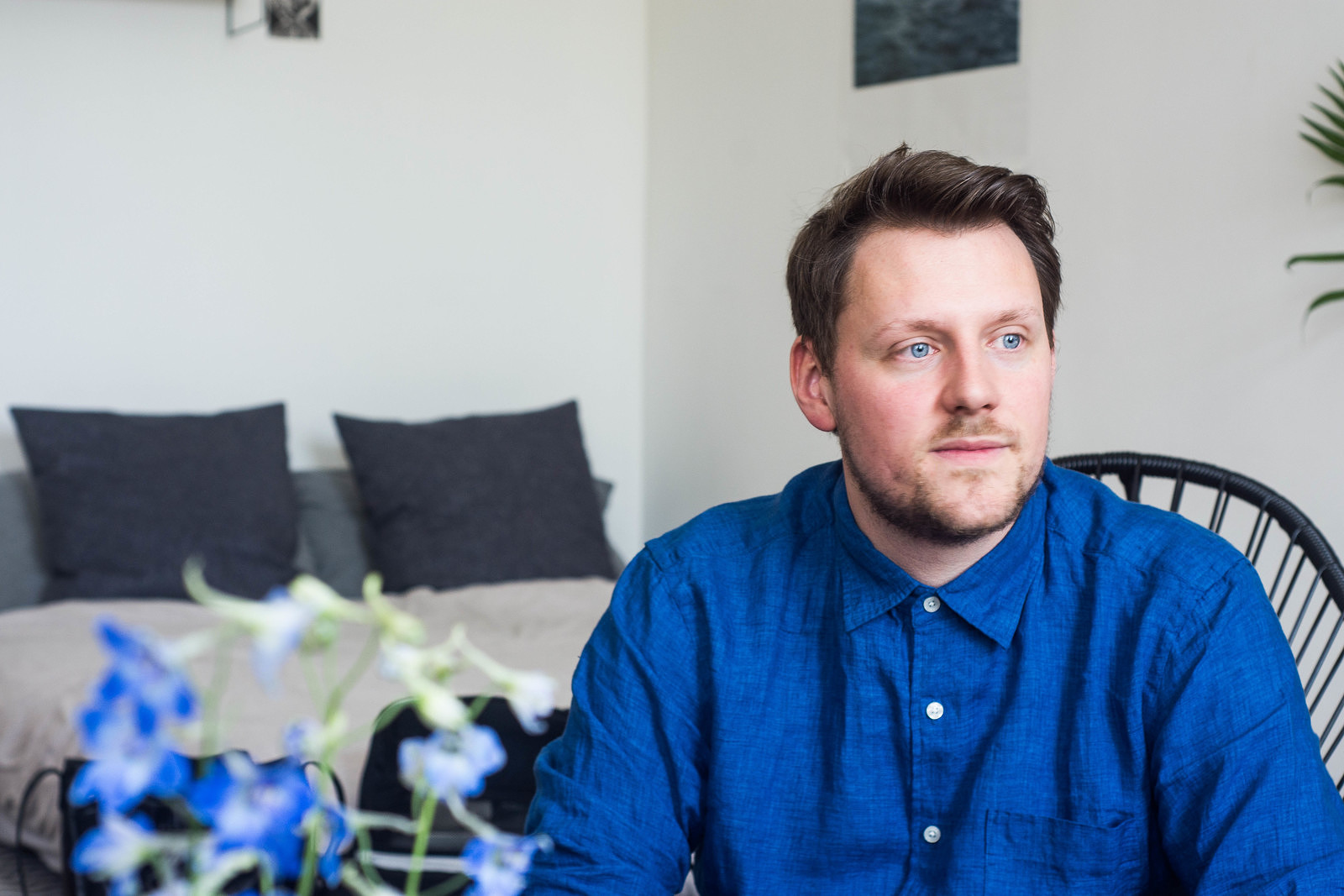Tim Labenda
"For Me It's All About Conveying a Feeling."


For an often hectic and fast paced world that fashion can be, Tim Labenda appears to be one of the most relaxed and pleasant designers you may ever encounter.
Comfortable, and above all habitable is what a home must be for Tim and his partner Hannes Kraus. Minimalism say the two, is long gone, with authenticity and personality taking on the new lead role when decorating homes. Interior design is currently as popular as fashion, with people's own personal characters starting to be the core of inspiration. We also asked Tim about how Berlin compares to New York, as well as the initial personal request from German Vogue Editor Christiane Arp, that played a huge role in his career as a fashion designer.
Sara: Tim, how interested are you in the area of interior design?
Tim: Very! I love to look for vintage furniture on places such as eBay and even the far corners of Germany. I just love being on the search for something specific.
Hannes: I call him ‘Tim Trash’! Literally any spare minute he has is dedicated to the eBay Classifieds. The living room is already full to the brim!
Tim: ...It’s not so bad - we always have people and friends we can give these things to (laughs).
Hannes: You should do this professionally!
Tim: For me it’s more of a general thing. Modern furniture is just not as engaging. I was recently at the Salone di Mobile in Milan and have had this thought again that old stuff is just way more real. I find furniture that’s been a bit worn down has more charm. They tell a little story. There’s also something you can experience when buying a used thing. We recently picked up a huge Monstera plant from an old grandma in the nursing home since it didn’t fit her little room anymore. We had so much fun with this woman! Something like this is just really nice. It’s the process itself that I love about tracking old furniture down. Way more interesting than simply going into a shop and buying something new. The story as well only adds more value when you meet these people. It’s the icing on the cake!
Hannes: Just like the other day when we went to Dresden to collect some things, we also now have the trip to connect this to.
Sara: You’re quite active when it comes to interiors!
Tim: Yeah because it’s really our hobby besides fashion and psychology.
Sara: Is there a connection between fashion and interiors for you?
Tim: Well fashion dresses people, and that’s what interiors do to a room. Just as the architect creates a space, the designer creates a space with fashion and I think there’s really not much difference between the two. I can never understand how someone in the fashion industry could have no sense for decor. I find the two just so similar.
Sara: Is there ever a connection between your collections and your furnishings?
Tim: I don’t believe that the collections are directly related to our home, but they definitely reflect off each other a little bit. Take the cushions for example! We made them ‘zero waste’ products by using fabric remnants from the collections. I also believe that the colour of my collections are reflected in the apartment. This year my collection is very dominated by palm trees from our strong connection to plants. There’s clearly proof of this in our apartment!
Sara: Isn’t fashion much more fast-paced than interior design?
Tim: The fashion industry is of course less stable. Fashion comes and goes in a season, or even faster, whilst interiors are more lasting. We also have this in our furniture.
Sara: What are your requirements for fashion and your own collections?
Tim: For me fashion is something where you have to connect it with life. I always wonder at the beginning of a collection what the people actually need, where is this going, what silhouettes and trends are coming into play. I always focus on transporting that feeling. Of course it should also work for many seasons, and be timeless, but it’s also really important to acknowledge the ‘now’ of this particular idea. Fashion for me must be super functional, it must be easy to wear and maintain so this is what I see is the same for my clients.
Sara: How do you create themes for your collections?
Tim: This is basically a fluid process. If I’m in the last steps of a collection there’s often already an idea for the next one. It could be the movie ‘Into the Wild’, then about a children’s book, and then about Matisse and his cut out artworks. So much is also developed in conversations with friends, however, for me there’s never an idea that’s fixed. It’s essential that I always stay open for changes and the development processes of the collection, otherwise it seems too forced in the end.
Sara: Who do you envision when designing?
Tim: Always an independant woman who is articulate, intellectual and who can stand on her own two feet.
Sara: So you originally came from a men’s tailoring, how did the transition into ladies fashion come about?
Tim: That came through Christiane Arp. She had seen my men’s collection and then said to me ‘Tim, this is so beautiful! Do it for women too! I’ll invite you to the Vogue Salon and support you!’ Even though I wasn’t so sure, I just did it… and it was quite successful! For me the the biggest challenge was finding out who I was actually designing for. I had previously designed my men’s collections for a young man and who I had a really clear picture of. With women I realised that this was going to be very different. It’s a very different way of living and a very different segment. I find this discovery process to be quite nice because it’s challenged me again and again to this day.
Sara: You lived in New York during your work for Kenneth Cole. How is the USA different from Europe in terms of fashion and interior design?
Hannes: I think it’s the approach and the aesthetics that differ. With fashion everything's straighter, shorter and a little bit over the top.
Tim: ...and with interiors it’s a bit smoother and polished. It’s almost bad taste (laughs). As far as fashion is concerned, everything in New York has to always be short and sexy. This is a very different woman who lives there than in Berlin. Our collection really doesn’t fit so well with New York, for example because we are too androgynous and have some masculine silhouettes. Over there it’s all quite sweet, cute and sexy with short skirts and smooth hair!
Hannes: There are some really nice neighbourhoods there. You will find many things from Europe that you can’t actually find here, for example the Cosmo plates from Seletti with Diesel. We saw them there for the first time but they were nearly five times the price.
Sara: How would you describe the feeling that’s emitted in your home?
Tim: First of all, it’s about comfort. I don’t like to feel like I’m standing in an empty space.
Hannes: I find this overkill of minimalism movement is definitely over. It’s now back to being colourful and having this look that everything was just thrown together.
Tim: … and it’s ok to express again what you like, for instance I’m a total fan of astrology and solar systems. 15 years ago you weren't allowed to have any plants in the room, whereas now we look forward to each new leaf that sprouts every morning (laughs).
Sara: Do you also recognise a new ‘spirit’ of the times?
Tim: I have the feeling that people are putting more of their interests into their interiors. Interiors have become much more important than fashion, and we notice this in many conversations we’re having. Interior design has become a very important factor in new bars and cafes etc. Without a concept behind it, it almost won’t work.
Text/Interview: Sara Umbreit